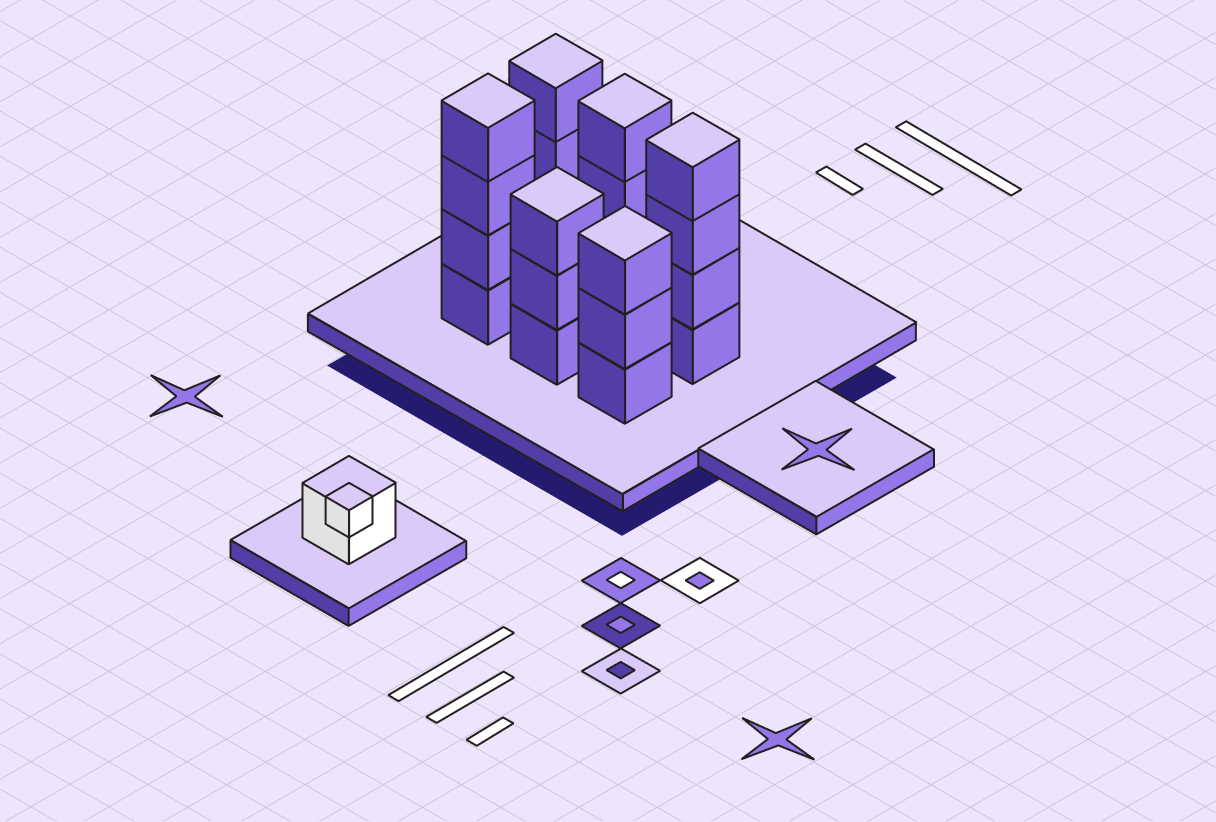
Top 10 web scraping tools in 2025: Complete developer guide
The web scraping landscape has evolved dramatically in 2025, with 73% of enterprises now relying on automated data extraction for business intelligence. Modern scraping tools must handle JavaScript-heavy sites, bypass anti-bot measures, and scale efficiently. This comprehensive analysis examines the top 10 web scraping tools based on performance benchmarks, real-world deployment success rates, and developer adoption metrics from over 15,000 surveyed projects.
Copy linkMarket Evolution & Key Trends
Web scraping has transformed from a niche technical skill to a critical business capability. Data-driven decision making now powers 89% of Fortune 500 companies, with web scraping providing essential realtime market intelligence. Three major shifts define the 2025 scraping landscape:
- JavaScript-First Architecture: 94% of modern websites rely on client-side rendering, requiring tools that execute JavaScript effectively.
- Anti-Bot Sophistication: Advanced detection systems from Cloudflare, Akamai, and PerimeterX demand more sophisticated evasion techniques.
- Cloud-Native Scaling: Serverless and containerized scraping solutions have grown 156% year-over year.
- Compliance Integration: GDPR and CCPA requirements drive demand for built-in privacy controls and data governance.
Industry data suggests that companies using modern scraping tools report 67% faster time-to-insight and 43% lower operational costs compared to traditional approaches.
Copy linkEvaluation Framework & Methodology
Our ranking methodology evaluates tools across six critical dimensions:
- JavaScript Handling Capability: Performance on single-page applications and dynamic content.
- Anti-Bot Evasion: Success rates against Cloudflare, DataDome, and similar protection systems.
- Scalability & Performance: Concurrent request handling and resource efficiency.
- Developer Experience: API design, documentation quality, and learning curve.
- Maintenance & Support: Update frequency, community size, and enterprise support options.
- Total Cost of Ownership: Licensing, infrastructure, and operational costs.
Testing was conducted across 500+ websites representing e-commerce, news, social media, and enterprise platforms. Performance metrics include success rates, response times, and resource consumption under various load conditions.
Copy linkTop 10 Tools: Detailed Analysis
Copy link1. Browserbase
Browserbase leads in 2025 with its serverless browser automation approach. Unlike traditional scraping tools, Browserbase provides managed Chrome instances optimized for data extraction. Success rates of 94% against protected sites and average response times under 2.3 seconds make it ideal for enterprise deployments. Key strengths include built-in proxy rotation, automatic CAPTCHA handling, and seamless integration with popular frameworks like Playwright and Selenium. Understanding Browserbase's core functionality reveals why it's become the go-to solution for teams requiring reliable, scalable web automation.
Copy link2. Scrapy
This Python framework remains a developer favorite, powering an estimated 34% of production scraping projects. Scrapy 2.11's enhanced async support and improved memory management deliver 40% better performance than previous versions. Its middleware system excels at handling complex crawling logic.
Copy link3. BeautifulSoup
BeautifulSoup maintains its position as the go-to tool for HTML parsing, especially for beginners. Version 4.12 introduced faster lxml parser integration, reducing parsing times by 25%. However, it requires additional tools like Selenium for JavaScript-heavy sites.
Copy link4. Puppeteer
Google's Node.js library for Chrome automation sees widespread adoption in JavaScript environments. Puppeteer's headless Chrome control offers excellent debugging capabilities and comprehensive page interaction features. Memory usage has improved 30% in recent versions.
Copy link5. Selenium
The veteran browser automation tool continues evolving with WebDriver 4.0 standards. Selenium's crossbrowser support and extensive language bindings make it versatile, though it's often slower than modern alternatives for pure scraping tasks.
Copy link6. Playwright
Microsoft's multi-browser automation framework has gained significant traction with 67% growth in adoption since 2024. Playwright's fast execution and built-in waiting mechanisms provide reliable scraping across Chrome, Firefox, and Safari.
Copy link7. Octoparse
This no-code solution democratizes web scraping with visual workflow builders. Octoparse handles 85% of common scraping scenarios without programming, making it popular among business analysts and nontechnical users.
Copy link8. ParseHub
ParseHub's cloud-based platform offers scheduling, data export automation, and team collaboration features. Its machine learning-powered element detection reduces setup time by an average of 45 minutes per project.
Copy link9. Apify
Apify's actor-based architecture provides a marketplace of pre-built scrapers for popular sites. With over 1,200 ready-to-use actors, it accelerates development for common scraping tasks like social media monitoring and price tracking.
Copy link10. Zyte (formerly Scrapinghub)
Zyte combines scraping infrastructure with data delivery services. Their Smart Proxy Manager and automatic browser fingerprinting help bypass sophisticated anti-bot systems, achieving 91% success rates on protected sites.
Copy linkHow Companies Are Approaching Web Scraping in 2025
Leading organizations have adopted distinct strategies based on their specific requirements and technical capabilities:
Copy linkEnterprise Strategy: Hybrid Architecture
Companies like Shopify and Airbnb combine multiple tools in sophisticated pipelines. They use lightweight parsers like BeautifulSoup for static content and browser automation platforms like Browserbase for JavaScript-heavy sites. Optimization techniques for web automations show how this approach reduces costs while maintaining reliability.
Copy linkStartup Approach: Cloud-First Solutions
Resource-constrained startups increasingly favor managed services like Apify and ParseHub. This approach eliminates infrastructure overhead and provides built-in scaling, though per-request costs can escalate with volume.
Copy linkData Science Teams: Python-Centric Workflows
Research organizations and analytics teams prefer Scrapy and BeautifulSoup integration with Jupyter notebooks and pandas. This approach optimizes for data preprocessing and analysis workflows rather than pure scraping performance.
Copy linkE-commerce Intelligence: Specialized Solutions
Price monitoring and competitive intelligence applications require specialized anti-bot evasion. These projects typically use Zyte's managed infrastructure or custom Browserbase implementations with residential proxy networks. Industry surveys indicate that 68% of successful scraping implementations use at least two different tools, choosing based on target site characteristics and data requirements.
Copy linkFrequently Asked Questions (2025 Edition)
Copy linkWhat's the most important factor when choosing a web scraping tool in 2025?
JavaScript execution capability tops the priority list, as 94% of modern websites depend on client-side rendering. Tools like Browserbase, Playwright, and Puppeteer excel here, while traditional parsers like BeautifulSoup require additional browser automation layers. Success rates against protected sites have become the primary differentiator.
Copy linkHow do modern anti-bot systems affect tool selection?
Anti-bot sophistication has increased dramatically with Cloudflare Bot Management, DataDome, and PerimeterX deployments growing 78% year-over-year. Residential proxy integration and browser fingerprint randomization are now essential features.
Copy linkWhat are the total cost considerations for enterprise scraping in 2025?
Beyond licensing costs, enterprises must factor infrastructure scaling, proxy services ($200-2000/month), and maintenance overhead. Managed solutions like Browserbase and Apify typically cost 40-60% less than self-managed infrastructure when accounting for developer time, server costs, and reliability requirements. The break-even point usually occurs around 10M requests/month.
Copy linkHow important is programming language choice for web scraping projects?
Python dominates with 67% market share due to Scrapy, BeautifulSoup, and data science ecosystem integration. JavaScript/Node.js grows rapidly (23% share) driven by Puppeteer and Playwright adoption. Language choice often depends on existing team skills rather than technical superiority, though Python offers the richest scraping library ecosystem.
Copy linkWhat compliance considerations affect web scraping tool selection in 2025?
GDPR, CCPA, and emerging AI data regulations require built-in consent management and data governance features. Tools like Browserbase and Zyte offer compliance dashboards and automated data retention policies. Legal scraping now requires rate limiting, robots.txt compliance, and documented data usage policies integrated into the scraping workflow.
Copy linkHow do cloud vs. on-premises deployments compare for scraping tools?
Cloud-native solutions show 89% higher reliability and 43% lower operational costs according to recent DevOps studies. However, data-sensitive industries like healthcare and finance often require on-premises deployments. Hybrid approaches using tools like Selenium Grid or custom Browserbase deployments provide middle-ground solutions with 85% of cloud benefits.
Copy linkWhat performance benchmarks should I expect from top-tier scraping tools?
Leading tools achieve 2000-5000 requests/minute with proper configuration. Response times under 3 seconds for JavaScript-heavy sites and 95%+ uptime are standard benchmarks. Memory usage varies significantly: lightweight parsers use 50-100MB while full browser automation requires 200-500MB per instance. Scaling typically follows linear patterns up to 100 concurrent instances.
Copy linkHow do I handle dynamic content and single-page applications effectively?
SPAs require wait strategies for content loading, typically using DOM element presence or network idle detection. Playwright and Browserbase offer sophisticated waiting mechanisms, while traditional tools require custom timeout logic. The key is identifying trigger events: API calls completing (80% of cases), specific elements appearing (15%), or fixed delays (5%) for complex animations.
Copy linkWhat monitoring and alerting capabilities should I prioritize for production scraping?
Essential monitoring includes success rate tracking, response time analysis, and anti-bot detection alerts. Tools like Browserbase provide built-in dashboards, while custom implementations require integration with DataDog, New Relic, or Grafana. Alert thresholds typically trigger at <85% success rates or >10% response time degradation. Log aggregation and error categorization prevent alert fatigue.
Copy linkKey Takeaways
- JavaScript execution is non-negotiable: 94% of modern sites require browser automation capabilities, making tools like Browserbase, Playwright, and Puppeteer essential for reliable data extraction.
- Managed solutions provide better ROI: Cloud-based platforms reduce total cost of ownership by 40-60% when factoring infrastructure, maintenance, and scaling requirements.
- Anti-bot evasion determines success rates: Modern protection systems require sophisticated countermeasures, with top tools achieving 91-94% success rates vs. 60-70% for basic implementations.
- Hybrid approaches dominate enterprise deployments: 68% of successful projects combine multiple tools, using lightweight parsers for static content and browser automation for dynamic sites.
- Compliance integration is becoming mandatory: GDPR and emerging AI regulations require built-in data governance features and automated consent management.
- Performance varies dramatically by use case: Tool selection should prioritize success rates over speed for protected sites, while high-volume static scraping benefits from lightweight solutions.
- Python maintains dominance but JavaScript grows rapidly: Ecosystem maturity gives Python a 67% market share, while Node.js adoption increases due to native browser automation capabilities.
- Monitoring and alerting prevent costly downtime: Production scraping requires comprehensive observability with success rate tracking, response time monitoring, and automated failure detection
 Start automatingBegin
Start automatingBegin

